“Tonight we welcome the visit of Brive, and continue to develop the new style that Kingsley and the guys are implementing, which, highlights of our tries this season will testify, is something we should continue to encourage. A second welcome from us goes out to a number of supporters of the Clubs around Gwent, who have used the timing of this fixture to come down to support the Dragons and our Rugby Family in our proud Region of Gwent.” – from the column of the new region supporters club in the match day programme for the Dragons v Brive, 14 October 2016.
“I enjoy the community game, the semi-professional game and the Test side of the professional game, but I hate the entire idea of following the non-Test side of the professional game.” – said nobody, ever.
The “N” word has overshadowed and crippled Gwent regional rugby for 13 years now.
It has set such a low affinity cap that the Dragons could have won back-to-back Heineken Cups in that period and most of the club diverse “region” would not have cared a jot. Although of course its very presence in the brand ensured that any Pro12 success without massive benefactor spending on the team was virtually commercially impossible such would be the sum required to offset the missed commercial and fan income.
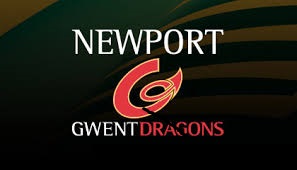
This in no way detracts in any way from the Newport club, and its many achievements, notably in October 1963 with the downing of Wilson Whineray’s All Blacks at Rodney Parade, but we either have club neutral regions or we don’t. And we had to go down the regions route, for remarkably obvious reasons.
Only regions would be acceptable to the wider Welsh rugby fraternity, even without the need to ring fence the maximum affordable 4 entities from relegation down to the rest of the WRU pyramid. An EGM to vote for Cardiff, Swansea, Newport & Llanelli “super” clubs? Might as well include a second motion on the same papers of no confidence in the WRU board. Such would be the obvious rejection of the first motion and the desire to sack any WRU board dumb enough to put forward “super” clubs to the wider club membership.
We have seen how, with the financing and willing, regional rugby should have been a relatively easy construct in Welsh rugby in 1995 to face the fresh challenges of the professional era of the sport (link). One region in the South, embracing the great union towns of Pontypridd, Bridgend and Maesteg, but commercially anchored on the capital city. Another region in the East, embracing the vast array of historic 1st class and rising 2nd class clubs in the Gwent valleys but commercially anchored on Newport as the commercial hub of Gwent. Another region to the West, reaching out as far as Aberystwyth but commercially anchored on the Port Talbot-Neath-Llanelli triangle. And a fourth region for all of North Wales. All club neutral, all creating new points of shared identity. We can all see how far away from this “blank piece of paper” ideal we currently are.
In fact the two regions that should have found it easiest to digest regional rugby should have been the North and the East, for different reasons at opposite ends of the 4 regions. The North had no former 1st class club rivalry to concern itself with at all, the East had so many former 1st class clubs (Newport, Ebbw Vale, Cross Keys, Pontypool, Newbridge, Abertillery, Tredegar, and with upcoming clubs to the west of the intended region) that any attempt to build a regional brand based on any one of those clubs would be guaranteed commercial suicide. But, this being Welsh rugby, we instead excluded the North altogether and alienated much of the East by adopting a one club regional brand.
And club power in the East was low in the mid-1990s. Pontypool had been relegated in 1994-95. Abertillery would be relegated in 1995-96. Newbridge would follow suit in 1996-97. And Newport would have been relegated in 1997-98, but for their reprieve by the one season breakaway of Cardiff/Swansea from the WRU pyramid in 1998.
In the summer of 1998, everything changed with Tony Brown starting to spend money on rugby union and through the corporate wrapper of an investment in Newport. This was the era before duopoly pay-per-view conflict in England and France, where the hobby horsing barriers to entry were much lower if still substantial. Long before a South African billionaire at Saracens. And in came a flood of marquee signings, including players of the calibre of Springboks Gary Teichmann and Percy Montgomery. And many Newport fans started to blur in their own minds the distinction between the underlying club and Tony Brown’s wallet, just as many Cardiff fans make the same mistake with Peter Thomas. The right investors, arguably, but the wrong corporate wrappers and especially from 2003.
And then, with the unfit for purpose and dying professional club meritocracy in meltdown, came the 2003 contraction. Not into a logical 4 regional Newcos, including 1 in North Wales, but into 5 South Walian “super” clubs on WRU funding for 4. In fairness no investor in Welsh rugby more pointed out the absurdity of 5 regions, on a business model of barely enough WRU funding for 4 regions, than Tony Brown. 2003-04 saw the Celtic Warriors crack first, with Pontypridd already in administration, as was most likely given that Leighton Samuel was the investor with the least wealth to “waste” on professional rugby. The wasted money on this “1 too many regions” 2003-04 season is graphically written down for all to see, at Companies House in the 2003-04 annual accounts of the Blues.
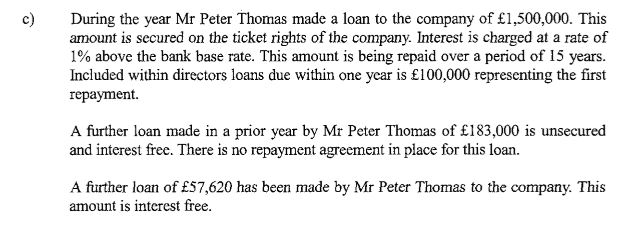
In the money that Peter Thomas had to “loan” to the Blues to weather the inevitable storm and inevitable further contraction down to the maximum affordable 4 regions that the WRU had wanted all along. Including the Blues £312,500 contribution towards liquidating the Celtic Warriors and obtaining their Heineken Cup place in addition to a 4 way share amongst the surviving regions of the player assets of the Celtic Warriors.
The summer of 2003 was an interesting period for me, then an exiled Pooler supporter. Pontypool had won the league below and secured promotion back to a top club flight that was now being downgraded. The “region” for Gwent would be an amalgamation between the Newport and Ebbw Vale clubs, such was the crazy way that regions were being created in Welsh rugby with several of the clubs holding their “Loyalty Agreement” legal pistols to the head of David Moffett and the impecunious WRU (link).
Newport held the whip hand in Gwent, for the region would need the financial muscle of Tony Brown in the absence of any new major external financial investors. It was a bizarre summer. Any Newport fans who bought a season ticket knew they were imperilling the chances of Newport seizing complete control of the region and emulating the Cardiff/Llanelli stand alone model. Ebbw Vale fans who bought a season ticket were risking buying a ticket for a Gwent brand and finding themselves watching a Newport brand come the start of the season. The neutrals, the other clubs, including at Pontypool, just let the politics play itself out before making any consumer decisions at all.
The political battle played out, Ebbw Vale investor Marcus Russell walked away (not least because he couldn’t sell any season tickets to any faction in that political climate), and Tony Brown came back on board. The WRU intervened to block another stand alone “super” club, with a 50% blocking “sleeping” stake, but we were all left with the “mish mash” of the Newport (in double font) Gwent Dragons. Most fans from that part of Gwent north of the M4 never engaged with the new lower (non-Test) professional tier.
In fairness, and although ultimately it was a mistake even in 2003, I could see the reasoning behind the panicked retention of Newport to placate an element of the Newport fan base emboldened by the stand alone status of Cardiff and Llanelli (at least for a season or two), but it inevitably spelt long-term commercial disaster and a long decline for the Dragons. A core secured, but a low cap also imposed. And so it came to pass, even as the Ospreys and the Scarlets were jettisoning their smaller stand alone and amalgamating club brands and embracing the future.
But the times are a changing at Rodney Parade, a ground I always liked even as an away club fan and the obvious headquarters of the eastern rugby region from day one. The very urban antithesis of the Pontypool Park natural amphitheatre. I took a look at the issues on 7 April, with the news that the funding director succession planning at the Dragons logically included belatedly severing the hard-link between the Dragons region and the Newport club (link). And a rare case of planned alignment in Welsh rugby. An otherwise unaffordable semi-pro club asset, Rodney Parade, preserved through a long-term lease to a club neutral commercially controlling region at the asset.
I went down to a Dragons match at Rodney Parade on Friday evening for the first time in many a season.
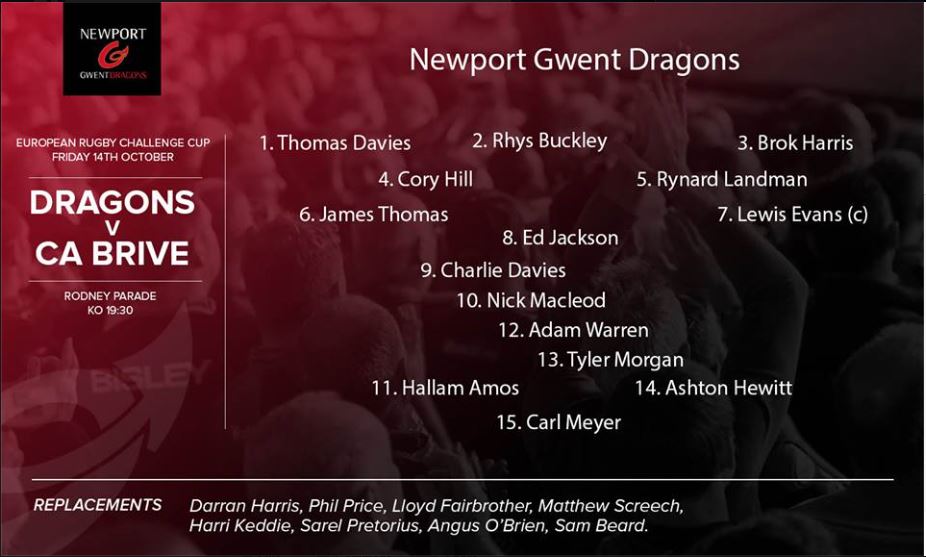
The atmosphere radically different to the Newport centric of the early regional years. And you notice it in the small things, not just in the large things, things such as the emphasis upon the Dragons in the match day programme. Not just in the obvious “Stand Up for the Men of Gwent” chanting/singing. A great chat with a long-term Dragons season ticket holder in the marquee, a man of Bedwas frustrated himself that the “N” word remains.
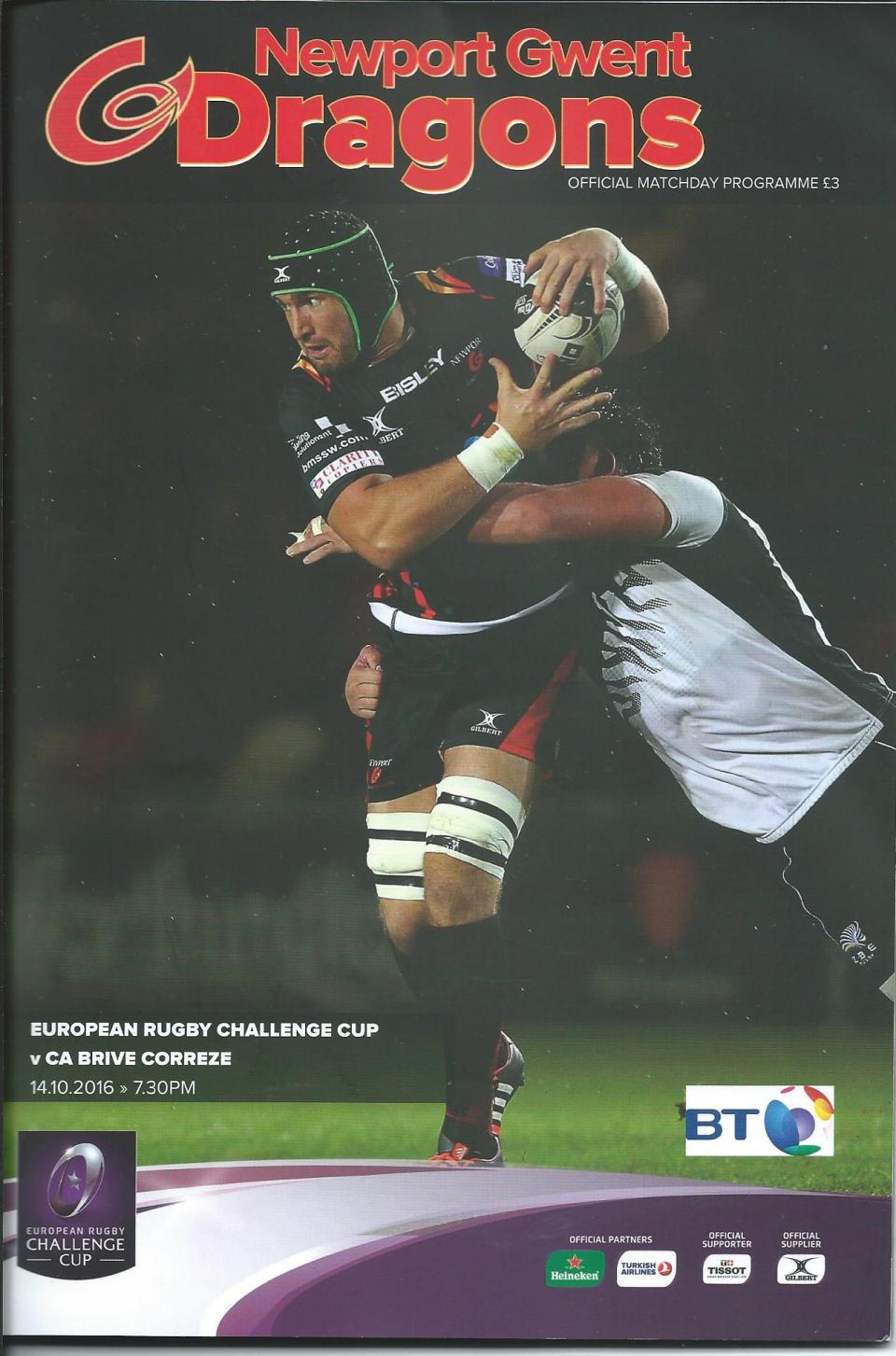
The days of the unhelpful “N” word at all in the region brand now surely numbered. The only outstanding question being whether to emulate the Ospreys and Scarlets and also dispose of the “Gwent”, given that a minority in Newport clearly view Gwent as meaning “the rest of Gwent apart from Newport“. Nobody should be naturally alienated by their own region’s club neutral branding, and Newport club fans matter just as much as everybody else. Both of these should be regional points of principle.
It was an enjoyable evening, helped by the Dragons defeating a loaded Brive 37-16 in some style. If only the Dragons players could be duped into believing that ordinary Pro12 matches were in fact Europe matches! An early lead, a Brive arm wrestle comeback, a Brive team playing for penalties, but then the Dragons pulling away in the last quarter with 3 excellent tries right in front of me for a comfortable win. The Dragons backs a constant threat, Brive never relaxed when Hallam Amos was anywhere near the ball in open or broken play. Lewis Evans quickly growing into the captaincy role, with remarkable speed and ease.
The only thing worse than a opening home fixture against a French club in Europe is an opening away fixture against a French club in Europe, the Gallic tendency to dip their toe in for the opening fixture and then, if that result goes wrong and/or they are struggling in the Top 14 from which they commercially cannot afford to be relegated, to write-off Europe and treat it as a development competition for youngsters on the fringe of the Top 14 squad. Their Anglo-Welsh Cup equivalent. And the first thing you do if drawn against a French club in the quarter-finals of Europe? Look at their Top 14 league position.
You can see why Philippe Saint-Andre described Top 14 players as “diesels“. Well paid certainly, but buffed-up and many no use for anything other than a close quarters arm wrestle. The aerobic challenge of Test rugby? Forget it. Watching lock Wilhelm Steenkamp waddling around between set pieces and breakdowns, personally trying to forget the early athletic Bulls Super Rugby region player. “More central contracts, when finances permit, dear WRU“. Nobody out of condition in France or unavailable in England.
We know the weaknesses at the Dragons; the retained divisive “N” word, the retiring funding directors, the absence of stadia state aid equivalent to that received by the Ospreys and the Scarlets, declining crowds within an ageing Newport club following (4,126 there on Friday evening, 7,112 there for the corresponding fixture in 2006-07 albeit that was a quarter-final match).
But they have always done some things well. We have always known that. A family friendly environment, with many children present. But there is simply not enough of these to make the region viable on that fan base alone. A Bisley Stand that ticks most boxes in relation to corporate hospitality requirements. A new regional supporters club, separate to the Newport club supporters club, that ticks all regional boxes. Arranging roadshows and, for example, drawing the attention of Gwent rugby fans to their past club players on the British + Irish Lions official website (link):
Many Gwent rugby fans can empathise with this article by Ebbw Vale photographer Neil Roberts on 9 October (link):
“The GWENT DRAGONS and their Supporters Club have been busy organising events throughout the Region and also at their HQ at Rodney Parade. Events that maybe, just maybe are bonding Rugby Supporters and Followers in pursuit of the one goal of making the Gwent Region something to be shouted about in a Positive way! OK yes I know that I have always said myself that as long as ‘that’ name is in the title of the Region, I will never go and watch them play and I know that I have been sent to cover the games for the agency but on such occasions that I have been in attendance, I can say that I have never heard the crowd chant ‘that’ name and there seems to be a movement to get it removed and the name will be called GWENT DRAGONS. Yes the tribalism of the Welsh Club Rugby Supporters will never go away and why should its it’s History is on show in every HQ throughout not only Our Region but every Region in Wales and that History will never ever be forgotten but now surely is the time to forge new Friendships with our ‘townie’ fellow Rugby Supporters and chant loud and proud the name of Our Region? Over to you guys and gals, no-one is forcing you too but maybe by saying no way the youngsters in your families are missing out on the interest in the sport and maybe their chance to one day take the field of play in their Regions Colours on their path to International Rugby.“
Yes, I’d ideally like to see further reform before embracing. To be certain that no new “our bat + ball” investors repeat the commercial mistakes of the past and my disengaging again, with the “N” word gone forever as part of far reaching structural/systemic reform of this entire troubled tier within Welsh rugby, but maybe now is the time. The thought of the Gwent region’s place being relocated to Colwyn Bay, and Gwent being allocated to the Blues, is simply too horrific to even contemplate. The enthusiasm with which I would waddle down to the Arms Park to chant “Cardiff” would make Wilhelm Steenkamp’s waddling look like Usain Bolt in the 100 metres.
With the region’s match on Friday evening and not in competition with the club game on Saturday afternoon, I was still free to watch my old 1st class club. I do not object over the course of a season to a couple of derby double headers on a Saturday afternoon/evening at the Principality Stadium, even to the occasional regular region match to appease the pay-per-view broadcasters. But regional rugby is an event for Friday evening or 6.30pm onwards on a Saturday evening. Club and region, not club or region. The need to build multiple affinities, Southern Hemisphere style (link).
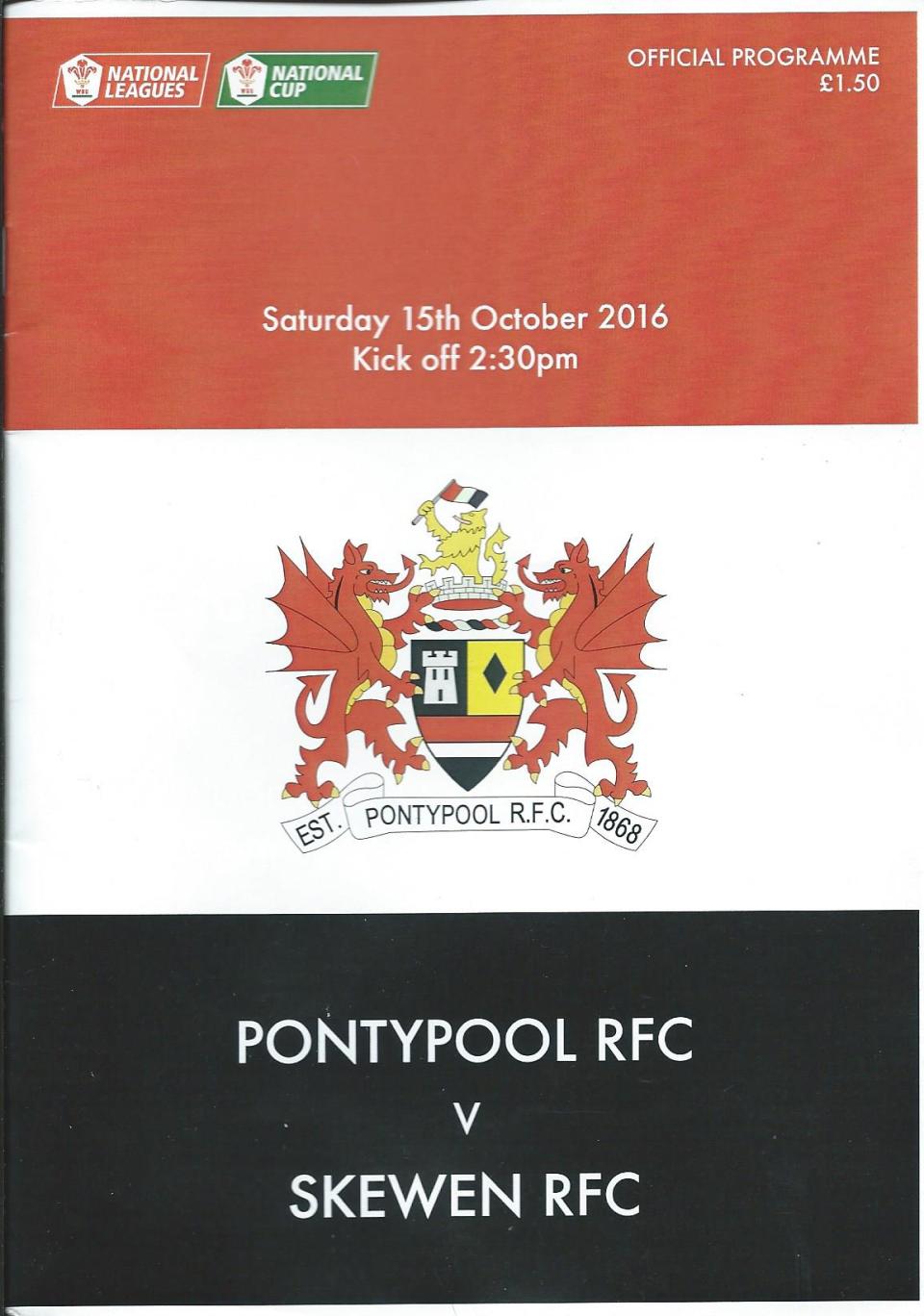
Pontypool welcomed Skewen, a team whose attitude impressed me. They offered little behind (and Pooler is not the best away ground for such a team), and found themselves 3-19 down at half-time having already had the benefit of the slope, but they defensively battled to the very end. The rain came down after 30 mins, most of the Pooler bank decamping to the shelter of the stand, but Skewen stayed out at half-time. Old school. Restricting Pooler to a 14-0 second half with the slope. Final score, Pontypool 33 Skewen 3. For individual Pooler match reports, please follow the ever excellent Tony Jones (link) (@tonyjonesauthor on Twitter).
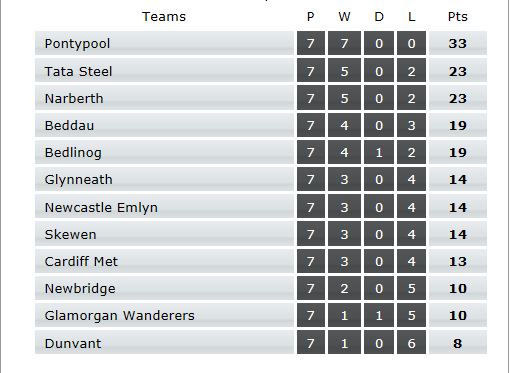
With Narberth losing at home to Beddau, and with Tata Steel losing up at Bedlinog, Pontypool are now unbeaten and 10 points clear after 7 matches. And with arguably on paper the two hardest away matches, Beddau and Tata Steel, under their belts. Yes plenty of hard away matches ahead. Narberth away, an absolute potential banana skin up at Bedlinog. But looking good for the remaining 14 matches.
Pontypool playing a more recognisably Pooler style this season. Not the “kick & chase” game of the Ray Prosser years, for the laws of the game have moved on, but definitely with a greater forward power before, as the pundits like to say, “earning the right to go wide“. Head coach Leighton Jones, son of Pooler legend Steve Jones (captain of the “played 47, won 45” Pooler side in 1987-88), the perfect fit as head coach. Ben Jeffreys laying the foundations off the pitch.
But now handicapped by the other “RF” words, ring fencing, marooned in the WRU Championship until 2020 because the semi-strategic snap shot (link) came a season too soon in the rebuilding curve from scratch in 2012.
A stronger team in 2016-17 than in 2015-16, and noticeably so, despite the inevitable loss to other clubs of some good individual players with the failure to secure promotion before the ring fencing. But balanced out by some good incoming talent. And this squad in due course will be strengthened by the return from injury of several players whose injuries in April proved so catastrophic in terms of the final promotion push matches against RGC1404 and Bargoed in the weeks to follow. It augers very well for the future.
And signs of alignment with the region at the academy level, the regional academy realising that Pooler is a great club environment in which to embed promising Tier 1 players. A young wing last season improving beyond his natural progression, signs of the same thing happening this season with a young lock. Mutual benefit.
And as for the rest of Welsh rugby this weekend? The same old strengths and weaknesses. The lessons learned? Mostly what we already knew.
(1) Welsh rugby produces lots of good talent, all 4 regions winning in Europe. And many of the other Pro12 teams, without the burden of a World Cup year. Zebre’s presence in the Champions Cup will again lead to an Italian distorting of a pool. The guaranteed Italian spot needs revisiting, without team improvement, as we can’t have 82-14 score lines.
(2) The desperately manufactured and dishonest myth of the “big Anglo-Welsh match crowd” took yet another absolute hammering. A 7,352 official attendance watched the Ospreys demolish a weak Newcastle side 45-0. An even smaller 6,521 official attendance for the Scarlets defeating Sale 28-11 in the main competition. Only 8,289 were attracted by the visit of the Blues to Bristol, thousands below Bristol’s 3 home domestic league matches. Like it or not, for good or for bad, the English clubs turned their backs on Anglo-Welsh rivalry between 1984-87 (link) and the crowds were seldom very big before that. Pure revisionism, born of desperation.
(3) The trials and tribulations of the embryonic regional “A” teams continued, only the Scarlets securing a win. 33-10 away at Nottingham today. The Blues and Ospreys both losing at home, to London Scottish and London Irish respectively. Crowds pitifully in the hundreds, not in the thousands. The Pontypridd treasurer no doubt in absolute despair, over that lost income from a 3-4,000 crowd and also the absence of any Premiership match instead. The Dragons at least played before a crowd of 2,218, losing at Bedford. Player development in a cultural and commercial vacuum, the outcome depressingly predictable. David Moffett specifically warning against (logical) “A” teams until the regions have stepped up to the plate as regions.
And finally this weekend, on a desperately sad note, the tragic early death of Munster coach Anthony Foley. I am sure everybody’s thoughts will be with his family at this difficult time for them.











An excellent article-thank you
LikeLike
Oliver, thanks for listening to the Rugby Dungeon podcast and for reading this blog. Yes, the East Glamorgan region position is now very complex (“I suspect that true regional ship has sailed”). Their financial future is heavily dependent upon redeveloping the Arms Park, the antithesis of a club neutral region. The eventers/neutrals at Principality Stadium games are just not interested in regular matches, hence 4-10k regular crowds at little old Arms Park. If you know the solution, answers on postcards to Peter Thomas and Martyn Phillips…!
LikeLike
My view on this (set out in this blog article -http://wp.me/p5B4on-za ) takes the opposite argument. My view is that the important thing is to have well funded regions with a balance on the time players have with the WRU and the region. A combination of these two factors will result in competitive teams, not just in the Pro12 but in Europe.
Plot league position against attendance on a chat and draw a line of best fit through it. In most cases there is a simple linear relationship; the more successful the team the more people want to watch them.
There will always be outliers to the rule but generally it is that simple. Taking NGD as an example, they haven’t had a competitive team for many a year now, so why would we expect people to flock to see them?
A couple of other quick points. Firstly, as my blog article shows we have forgotten how bad a lot of the attendances were pre-regionalisation. Swansea averaged around 3k, Neath about 4k, Newport 6k. It’s worth remembering these figures when we bemoan the current attendances because the days of 30k turning up to watch Cardiff v Newport were decades and decades away.
Secondly, in an area as small as Wales there a few stadia that can host top level rugby games. This means that regardless of the name of the team playing in old Gwent or old South Glamorgan, the only realistic venues are in Newport and Cardiff.
Immediately this means that a section of the supporter base will be disenfranchised – using some of the points you make. There really is no way around this.
Finally, I haven’t seen any logical argument to have a region in North Wales. It is great to see some of the good work going on there but the lack of a) a fan base, 2) a top class venue and 3) funding, means it makes sense to focus efforts on the existing arrangements.
Indeed the battle is to keep 4 regions, because it is easy to envisage this number reducing to 2 in the not so distant future as more money comes in to the game and resources have to be further concentrated to compete at the top level.
LikeLike
I think you are conflating a number of issues and getting confused:
(1) It’s common ground, I hope, that potential pro rugby consumers in North Wales have nowhere to go within the WRU pyramid. A void between RGC1404 and Wales. That’s exclusion.
(2) It’s generally agreed that the Liberty and Parc y Scarlets are very close together, with both commercial departments heavily fishing in the same Port Talbot-Neath-Llanelli triangle. That’s obvious duplication, although little (if any) sign of brand alienation. It gives lesser scope for future growth, as the market is already more deeply penetrated than elsewhere. The Swansea FC golden era has also increased external pressures, but that might be transitory e.g. the Swans get relegated from the EPL.
(3) There is strong evidence of brand alienation in East Glamorgan and Gwent, many fans refusing to have anything to do with the regions whilst “Cardiff” or “Newport” (or even “Gwent”) remain in the brand. That gives you an affinity cap in these regions, beyond where success cannot generate further support because some fans are fundamentally opposed to the brand as a point of principle once you have exhausted other sources of potential fan growth. No level of success will attract them.
(4) Success increases crowds, to differing degrees based on inclusivity and subject to an outright affinity cap in 2 regions. There is no potential for crowd growth in North Wales, without ending the duplication around Greater Swansea and having 1 of 4 teams in North Wales.
(5) Stadia is a red herring. I know many Gwent rugby fans vehemently opposed to the “N” word, but little if any complaints about headquartering the East/Gwent region at Rodney Parade. It is a better venue than Cwmbran, in the absence of no retailer funded out of town development around Newport.
(6) Yes, 4 is the absolute maximum number of regions that Wales can support. North/South/East/West is the most logical. You would go to 2 or 3 if the aim was Pro12/Euro success, but 4 better meets the developmental requirements of the Welsh national squad that underpins the entire Welsh rugby business model.
Thanks for your comment. It is much appreciated when people take the time to post a comment.
LikeLike
Good read. Heard you on the Rugby Dungeon podcast and thought I’d take a look.
It does seem pretty obvious that the creation of ‘super clubs’ over regions has constricted the growth of the teams, in terms of support and associated commercial performance, and a shame the game’s administrators couldn’t rise above the politics of the time. However I hope now that we’re a decade or so into the new setup and the Ospreys in particular moving beyond the initial club branding with some success that we’ll see some further evolution.
Of all the regions, I do think the Blues could probably survive despite keeepin the Cardiff, I suspect that true regional ship has sailed for them, few Ponty fans will believe in a re-branding at this stage. I recall the Blues getting 50k+ attendances at the Millenium Stadium for their Heineken Cup QF and SF a few years ago so the scope is there for them to grow their regular fan base if they could get a few years of sustained success. For me, a Blues fan, that would be Playoffs in the Pro 12 3 years from 5 and a decent showing in Europe, e.g. Challenge Cup QF or getting out of a Champions Cup group. The odd trophy or final every 5 years or so would be nice! That doesn’t seem unrealistic.
I hope the regions continue to evolve and bed in to their communities. Definitely hope we don’t see another revolution. Teams and competitions are easier for the fans (and TV money) to invest in with some history behind them. The Pro 12 has benefitted hugely from the revision to the Euro qualification but also just from being a more mature league.
Look forward to reading more in future.
LikeLike
Brilliant. So you want all of the facilities that the Newport club has to offer but not have their name in the title. Hypocrite.
LikeLike
Great read, mate. I am a Hirwaun boy and feel exactly the same about the C word. I have long since given up on the WRUin doing anything about their pet city clubs.
LikeLike
Indeed, but the Blues has a much more bilateral problem, Cardiff v Pontypridd, with Bridgend/Maesteg having been allocated to the Ospreys and Merthyr only recently emerging from their 130 year slumber. It would be interesting to see the branding decisions if post-2020 WRU funding of the Blues was exclusively based on a series of KPIs involving attracting regional support from Pontypridd fans! Monmouthshire always had a far more diverse major club game that Glamorganshire and Carmarthenshire.
LikeLike
Walkedawayalongtimeago
Thanks for your comment. That’s not the issue, is it? If a council or retailer funded new stadium was offered I would take it. But I would prefer Rodney Parade rather than Cwmbran Stadium for a number of reasons. It is better located and suited to rugby, and money is retained within the sport i.e. Newport RFC is assisted. Newport RFC would not be able to afford the facility without the region playing there, so the choice would be to either sell Rodney Parade to the soccer club or to sell the stadium for city centre housing redevelopment. The region playing at Rodney Parade is a compromise that suits various parties, particularly Newport RFC. I do not want Rodney Parade converted into a block of flats.
LikeLike